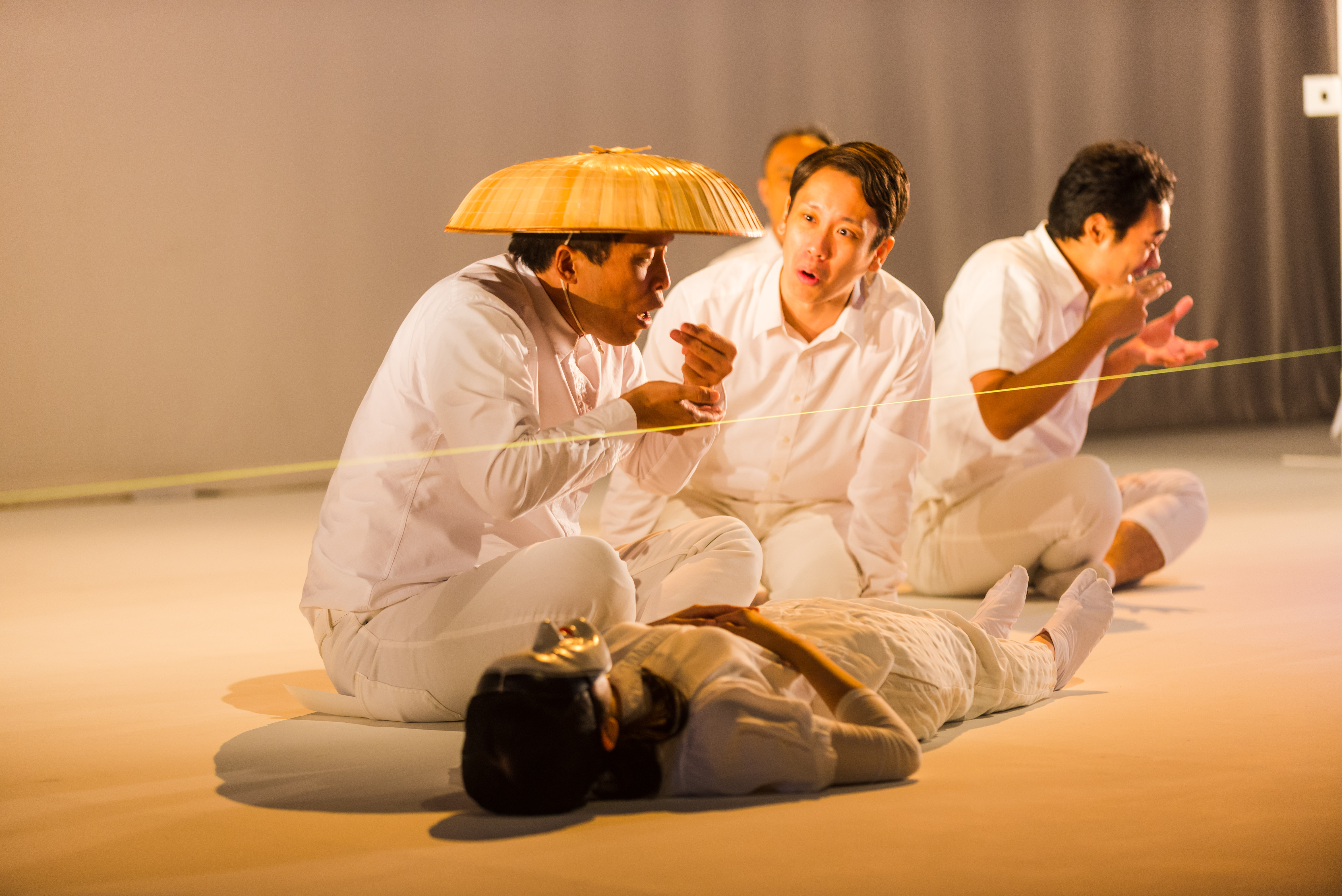The Seed of Life
An intense spiritual experience that rethinks concepts of love and loss.
As I left the theatre after the performance, I was struggling to find a word to encapsulate my feelings towards this piece by The Finger Players. I was disturbed, but not in a bad way. I was anxious for more, but I was satisfied with the length of the play.

And I think that’s the true beauty of SEED – it creates this complex emotion within you, like many different flavours coming together on one’s palate.
SEED was devised during the 2013 Asian Performing Arts Festival in Tokyo under the direction of Chong Tze Chien, and is composed of a series of loosely-linked vignettes set in a Japanese context. An old man dies in a foreign land (New York) and wishes his wife to bring his body back to Japan. A rice-farming family in Japan disintegrates after the death of the mother. A nuclear incident leads a university student to try to convince her mother to leave the house to avoid the fallout.
The soul-searching of the play draws audiences in and reveals an ironic twist to everyday situations. These include: a wife’s misplaced love for her husband by constantly cooking for him ends up inadvertently feeding him to death; a starving couple afraid of food affected by nuclear radiation travel to the area affected by the nuclear fallout and discover that the food there is delicious after all.
SEED is performed in Japanese (with English surtitles), but don’t worry if you don’t understand Japanese – it won’t detract from your enjoyment of the play. Those familiar with Chong’s unique writing style will also recognise elements from his earlier works: the web of narratives, the black humour, and the blurring of boundaries between dead and alive. Together with the influences from Noh theatre and the Japanese culture’s emphasis on interiority, the play forms a delicately-nuanced take on famine and family, consumption and copulation.
The staging setup is simple: cords are strung across the stage in different configurations, and costuming is equally minimal (save for the use of masks). The focus, then, is on the acting, which the ensemble cast pulls off brilliantly. However, I suspect the performance may have benefited from a smaller venue, to experience the intimacy suggested by the play (I also notice that there are many empty seats, on opening night, no less!).
“We need things before we understand why we need them.” This, together with several other aphorisms, are scattered throughout the play, encouraging audiences to reflect on aspects of life that are normally taken for granted.
Rice. Family. The afterlife. Beauty in destruction.
And of course, good theatre.